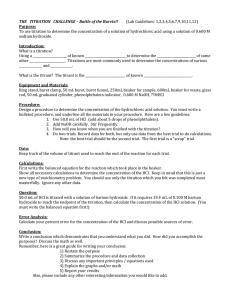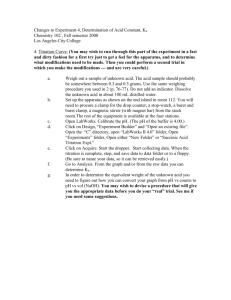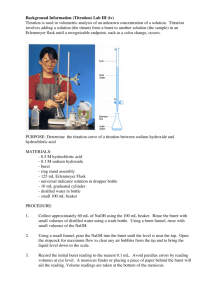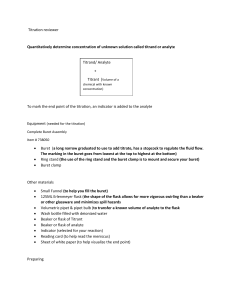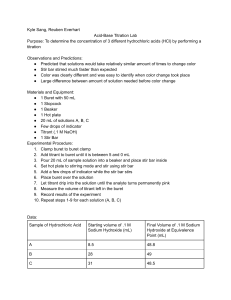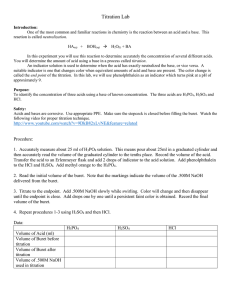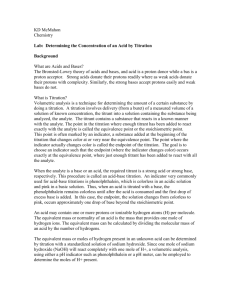Chemistry 122 Pre-Laboratory Assignment for Experiment 1:
advertisement
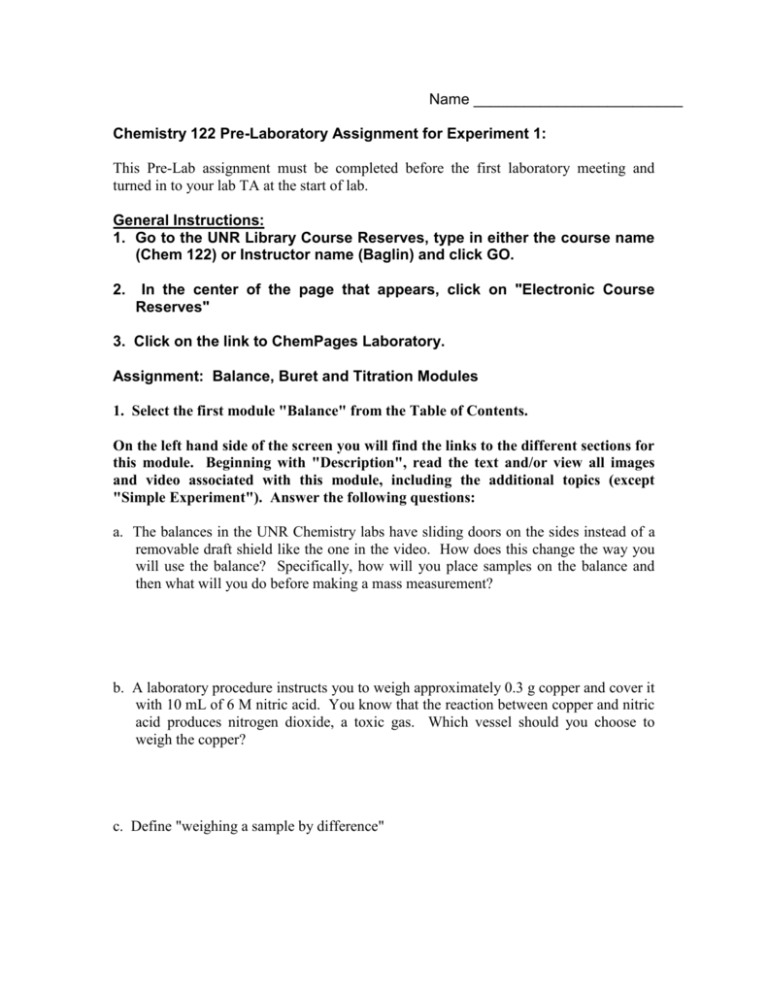
Name _________________________ Chemistry 122 Pre-Laboratory Assignment for Experiment 1: This Pre-Lab assignment must be completed before the first laboratory meeting and turned in to your lab TA at the start of lab. General Instructions: 1. Go to the UNR Library Course Reserves, type in either the course name (Chem 122) or Instructor name (Baglin) and click GO. 2. In the center of the page that appears, click on "Electronic Course Reserves" 3. Click on the link to ChemPages Laboratory. Assignment: Balance, Buret and Titration Modules 1. Select the first module "Balance" from the Table of Contents. On the left hand side of the screen you will find the links to the different sections for this module. Beginning with "Description", read the text and/or view all images and video associated with this module, including the additional topics (except "Simple Experiment"). Answer the following questions: a. The balances in the UNR Chemistry labs have sliding doors on the sides instead of a removable draft shield like the one in the video. How does this change the way you will use the balance? Specifically, how will you place samples on the balance and then what will you do before making a mass measurement? b. A laboratory procedure instructs you to weigh approximately 0.3 g copper and cover it with 10 mL of 6 M nitric acid. You know that the reaction between copper and nitric acid produces nitrogen dioxide, a toxic gas. Which vessel should you choose to weigh the copper? c. Define "weighing a sample by difference" 2. At the top of the page find the pull down menu that says Laboratory Resources. Select the "Buret" module and click go. Beginning with "Description", read the text and/or view all images and video associated with this module. Answer the following questions: a. How does one prime a buret? b. Suggest a better way to fill a buret than the method shown in the self check video in the section on Filling the Buret. c. In the Reading the Volume section, what is the scale increment that is shown? What do you think the units are? 3. Go to the Titration module (there is a link on the left hand side of the page under "Additional Topics", or you can go to the pull down menu at the top of the page). Read all sections, including all Additional Topics. Answer the following questions: a. Why is an Erlenmeyer flask used as the titration container? b. How should titrant be added at the beginning of a titration? c. How should titrant be added near the end point of a titration? d. How much indicator is typically recommended? e. Is there an exact number of trials needed to accurately determine a given property? f. What are the factors that the number of trials needed depends upon?

